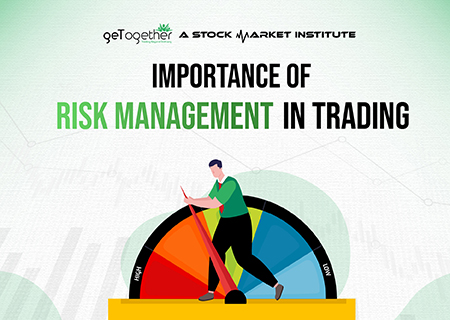Why the Significance of Risk Management Can not Be Overlooked in Today's Economic climate
In today's quickly evolving economic landscape, the function of Risk Management has actually become pivotal. This raises a crucial question: can the significance of Risk Management in making sure stability and sustainability be ignored?
Recognizing the Idea of Risk Management

The Role of Risk Management in Today's Economic climate
Having grasped the concept of Risk Management, we can now discover its function in today's economy. In the context of an unforeseeable financial landscape marked by fast worldwide occasions and technological changes, Risk Management comes to be an essential critical element, adding to the security, sustainability, and general resilience of economies on both a macro and mini scale.
The Effect of Ignoring Risk Management
Neglecting Risk Management can cause dire consequences for any kind of service or economy. When prospective dangers are not determined, analyzed, and alleviated, companies reveal themselves to usually substantial and unexpected problems. These can show up as economic losses, reputational damage, functional interruptions, or perhaps legal problems. Moreover, in today's unsteady economic environment, an unforeseen dilemma can quickly escalate, leaving an ill-prepared business clambering for survival. The global monetary crisis of 2008 works as a raw reminder of the tragic influence that overlooking Risk Management can carry the economic climate at huge. Therefore, disregarding Risk Management not only intimidates individual businesses yet can undercut the entire economic situation, highlighting the essential function played by effective Risk Management in today's financial landscape - importance of risk management.
Key Parts of Efficient Risk Management Methods
Effective Risk Management approaches revolve around 2 essential parts: implementing and recognizing potential risks reduction steps. To ensure the stability and sustainability of a business, these components must not be neglected. In the adhering to discussion, these essential elements will be discovered in information.
Identifying Prospective Threats
Why is identifying possible risks essential in any type of Risk Management strategy? Recognition of prospective risks is the cornerstone of any efficient Risk Management approach. It involves the systematic evaluation of business landscape, both internal and outside, to uncover hazards that might hinder a company's critical objectives. Identifying possible threats allows companies to expect issues, instead than simply react to them. This positive approach empowers businesses to handle uncertainty with self-confidence, by highlighting areas that require more focus and preparation. It also enables them to focus on sources effectively, focusing on dangers that might have one of the most significant impact on their procedures. In general, the procedure of determining possible dangers is an important action in cultivating company durability and promoting sustainable growth.
Executing Reduction Steps
Navigating through the volatile business waters, organizations get started on the critical look here trip of carrying out mitigation procedures as component of their Risk Management methods. These steps, developed to lower the influence of possible risks, create the backbone of a durable Risk Management plan. They encompass numerous techniques, consisting of moving the Risk to one more event, preventing the Risk, decreasing the unfavorable impact or possibility of the Risk, or also accepting some or all the consequences of a specific Risk.

Case Studies: Successful Risk Management in Technique
Despite the complexities involved, there are several circumstances of effective Risk Management in practice that demonstrate its important duty in company success. The automaker swiftly developed a danger Management team that minimized production downtime by identifying alternative vendors. These circumstances highlight that effective Risk Management can not only secure companies from prospective risks but likewise enable them to seize opportunities.
Future Patterns in Risk Management: Adjusting to a Dynamic Economy
Looking in advance, the landscape of Risk Management is poised for considerable adjustments as it adapts to a dynamic economic climate. Technological innovations are anticipated to reinvent the area, with automation and man-made intelligence playing a crucial role in Risk recognition and mitigation. This shift will certainly require a new skill established for Risk supervisors, that will certainly need to be skilled at using these technologies. At the same time, the raising intricacy of international markets and the unpredictability of geopolitical occasions are making Risk Management a lot more tough. A fad in the direction of more integrated, all natural methods to managing risks that take into consideration a vast variety of circumstances is prepared for. This will certainly be important in browsing the intricacies of the future economic environment.
Conclusion
In final thought, Risk Management plays a crucial function in today's volatile and interconnected economic climate. As the economic situation continues to progress, so need to run the risk of Management methods, highlighting its recurring significance in an ever-changing organization home landscape.
An appropriate Risk Management approach is not regarding removing threats completely - an accomplishment almost difficult in the unstable globe of business. Thus, disregarding Risk Management not only intimidates individual businesses but can undercut the whole economic climate, emphasizing the essential function played by reliable Risk Management in today's economic landscape.
Effective Risk Management methods revolve around two crucial elements: recognizing potential dangers and straight from the source implementing reduction actions.Why is determining prospective threats essential in any kind of Risk Management strategy? They encompass numerous methods, consisting of transferring the Risk to one more event, staying clear of the Risk, lowering the adverse effect or likelihood of the Risk, or even approving some or all the consequences of a particular Risk.